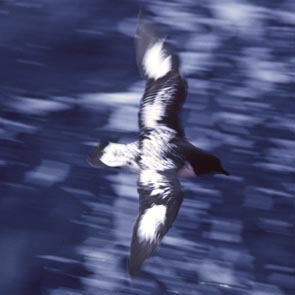Mapping the South Pole
ERA developed the maps to support the new environmental management plan for activities at the South Pole, including the Amundsen-Scott South Pole Station (US). The work was carried out in collaboration with Raytheon Polar Services (RPS)(Centennial, Colorado) for the Office of Polar Programs, National Science Foundation, and in support of the United States Antarctic Program. The maps form a key part of the management plan for a new Antarctic Specially Managed Area, which the US Government proposed at the 2005 Antarctic Treaty Consultative Meeting held in Stockholm, Sweden. The maps show key geographical features at the South Pole, including topography, ice extent, proposed management zones, proposed overflight restrictions, oversnow approach routes and infrastructure at Amundsen-Scott Station such as buildings, antenna arrays, the airfield, fuel facilities, and camp locations. Amundsen-Scott Station facilities data are maintained by RPS in AutoCAD format, which were transferred and converted to a form that could be used in GIS.
Preparation of the maps presented a number of unique technical challenges. First, the ice at the South Pole is moving at a rate of ~ 10 m per year. Hence, all facilities in the area move in relation to the Geographical South Pole by this amount each year. With everything shifting in its true position every year, this presents an unusual mapping situation! By adopting a local reference grid, features may be referenced to eachother and by re-surveying the position of the Geographical South Pole every year, the change in true coordinates of the facilities can be determined.
Secondly, unlike maps at lower latitude locations, at the South Pole every direction is north! For this reason, the local grid is also more practical to use when giving directions at large scales, otherwise simple descriptions of directions such as 'east' or 'northwest' can be confusing. For large-scale maps the Greenwich Meridian (0°) is designated as 'North', and maps are orientated with this direction to the top of the page.
The third challenge in map design related to the particular audiences for which the maps were intended. On the one hand the maps had to be useful and understandable to users on the ground, while on the other they had to be prepared in a form that could be readily used by the Antarctic Treaty Consultative Meeting. The former audience requires a lot of local detail, while the latter tends to require more information that sets the site in a broader context. Moreover, the latter tends to require that maps be prepared as black & white line drawings, since they need to be easily reproduced using a wide variety of technologies. Designing maps in shades of grey requires careful thought over symbology so the many different features can be represented in a clear and informative way.
UPDATE 12 Aug 2007: The management plan and maps were adopted by the Antarctic Treaty Consultative Meeting at their meeting held in Delhi, India, between 30 April and 11 May 2007.
Map 1: South Pole ASMA No. 5, Location and topography (pdf 603 KB)
Map 2: South Pole ASMA No. 5, Management Zones and Sectors (pdf 1.2 MB)
Map 3: South Pole ASMA No. 5, Amundsen-Scott Station Environs, Management Zones and Sectors (pdf 3.9 MB)
Map 4: South Pole ASMA No. 5, Amundsen-Scott Station (pdf 3.5 MB)
Thanks to Nick McWilliam for technical assistance and to all reviewers for helpful comments on the drafts.


